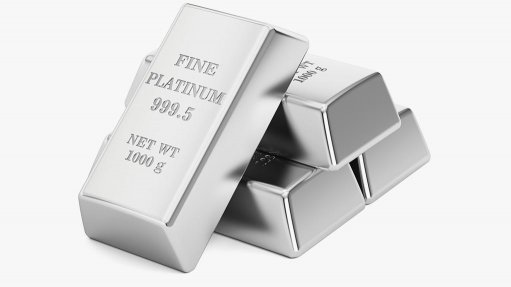Shaft capping prevents illegal mining, improves ground safety




COVER UP Shaft capping and sealing is undertaken to reinstate land to unrestricted use
RESTRICTED USE The most effective means of ensuring that redundant shafts are not occupied by illegal miners is to permanently seal shafts
FORMER GLORY If shaft capping is executed properly, it is highly unlikely that the natural ground level will be affected or sink
Redundant mine shafts are becoming a growing risk for mining companies, owing to a sharp spike in illegal mining activities.
“Illegal mining stems from desperation. People are willing to risk their lives by going underground, armed with weapons, to try and recover pockets of unmined material, copper cable and steel shaft infrastructure. It is not uncommon to witness extreme violence or intimidation in these areas,” says specialist demolition contractor Jet Demolition contracts manager André Botes.
The Witwatersrand basin – cited by Norman & Whitfield – Geological Journeys, as contributing more than 50% of all gold ever produced on earth – epitomises the country’s mining network and how endemic the problem of illegal mining has become.
Botes explains that a shaft is considered redundant when the ore grades are no longer considered feasible or profitable.
He tells Mining Weekly that the most effective means of ensuring that redundant shafts are not occupied by illegal miners is to seal the shafts permanently below natural ground level (NGL), typically after filling the shaft barrel.
Jet Demolition offers turnkey services to the mining industry of backfilling shaft barrels, designing permanent caps, installing caps at a defined depth below NGL and recording the final position and depth of the caps. This is followed by the backfill and reinstatement of the natural material over cap tops.
Mine houses would typically require such services to seal the shaft permanently, thereby preventing unauthorised access by illegal miners and to rehabilitate the mining footprint fully, rendering the area safe for public use.
However, in terms of mines being put on care and maintenance, he notes that a shaft can be reopened, primarily if a temporary cap was installed.
He stresses that, in such cases, the underground conditions may change and demand the installation of a permanent shaft seal, adding that for final closure, the temporary cap would be exposed, demolished and replaced with a permanent cap.
“There are different shaft-sealing methods available depending on the specific substructure layout of the mine. Often, backfilling of the shaft is not possible, as it would affect interlinking shafts or stopes. In these instances, clients elect to install either a temporary cap in the interest of safety, or a very heavy permanent cap, without backfill,” Botes explains.
He adds that either method ensures that shafts are sealed properly, thereby immediately decreasing the risk associated with open, unmanned shafts.
Shafts are often interconnected – such as a live shaft and a redundant shaft linking together hundreds of meters below NGL – which poses a significant challenge for mine capping.
“It is critical to ensure that we understand the network in which we are operating so that our capping and sealing activities do not influence or adversely affect mineworkers underground in a neighbouring shaft.”
Botes explains that there are several processes in place to ensure that shaft capping is done safely and successfully. “The main requirement for permanent shaft sealing and capping projects is to ensure full compliance with the Mine Health and Safety Act. Additionally, the entire process wholly depends on the provisions of the Department of Mineral Resources and Energy, approved environmental management plans, as well as any client-specific requirements.”
The natural surrounding environment also has to be taken into account, with special attention paid to natural water courses and stormwater management. This could mean rerouting natural water courses slightly, while ensuring there is no subsequent negative downstream effect. All material used to fill shafts must be clean and uncontaminated. This is vital to ensure that no groundwater contamination will occur after sealing.
“We have also sealed a few shafts that had to be equipped with monitoring access points as part of the Acid Mine Drainage project in the Western, Central and Eastern basins of the Witwatersrand goldfields. These access points will be used to monitor the quality and volume of subsurface water in the foreseeable future,” Botes reveals.
He states that each cap’s design takes into consideration future land use and is signed off and approved by the landowner. “As for the installation of the cap, each project is managed by full-time on-site personnel, ensuring that shaft sealing is undertaken in strict accordance with approved designs.”
Moreover, in terms of shaft closure, shaft capping and sealing are undertaken to reinstate land to unrestricted use. If executed properly, it is highly unlikely that the NGL will be affected or sink, adds Botes.
He says that, as every mine’s layout differs, Jet Demolition is “extremely dependent” on the information provided by the landowner regarding the structure of the shaft.
“No person is able to guide a project in the right direction other than someone with an in-depth knowledge of the mine substructure and strata. Upon consultation, Jet Demolition will be given either a defined scope of work or we will propose a scope of work based on our own experience, suited to the specific site.”
Thereafter, Jet Demolition can allocate plant, personnel and material resources to a project to determine the overall project cost.
He comments that, while shaft capping can prevent illegal mining, capping projects are typically short term, subsequently reducing the scope for job creation. “If one considers that the majority of training programmes – paired with suitable, relevant experience – can take a few months to complete, short-term employment is not viable.
“However, on our larger, longer-term projects, we undertake specific training programmes to upskill local communities in a safe and responsible manner,” Botes concludes.
Comments
Press Office
Announcements
What's On
Subscribe to improve your user experience...
Option 1 (equivalent of R125 a month):
Receive a weekly copy of Creamer Media's Engineering News & Mining Weekly magazine
(print copy for those in South Africa and e-magazine for those outside of South Africa)
Receive daily email newsletters
Access to full search results
Access archive of magazine back copies
Access to Projects in Progress
Access to ONE Research Report of your choice in PDF format
Option 2 (equivalent of R375 a month):
All benefits from Option 1
PLUS
Access to Creamer Media's Research Channel Africa for ALL Research Reports, in PDF format, on various industrial and mining sectors
including Electricity; Water; Energy Transition; Hydrogen; Roads, Rail and Ports; Coal; Gold; Platinum; Battery Metals; etc.
Already a subscriber?
Forgotten your password?
Receive weekly copy of Creamer Media's Engineering News & Mining Weekly magazine (print copy for those in South Africa and e-magazine for those outside of South Africa)
➕
Recieve daily email newsletters
➕
Access to full search results
➕
Access archive of magazine back copies
➕
Access to Projects in Progress
➕
Access to ONE Research Report of your choice in PDF format
RESEARCH CHANNEL AFRICA
R4500 (equivalent of R375 a month)
SUBSCRIBEAll benefits from Option 1
➕
Access to Creamer Media's Research Channel Africa for ALL Research Reports on various industrial and mining sectors, in PDF format, including on:
Electricity
➕
Water
➕
Energy Transition
➕
Hydrogen
➕
Roads, Rail and Ports
➕
Coal
➕
Gold
➕
Platinum
➕
Battery Metals
➕
etc.
Receive all benefits from Option 1 or Option 2 delivered to numerous people at your company
➕
Multiple User names and Passwords for simultaneous log-ins
➕
Intranet integration access to all in your organisation





















